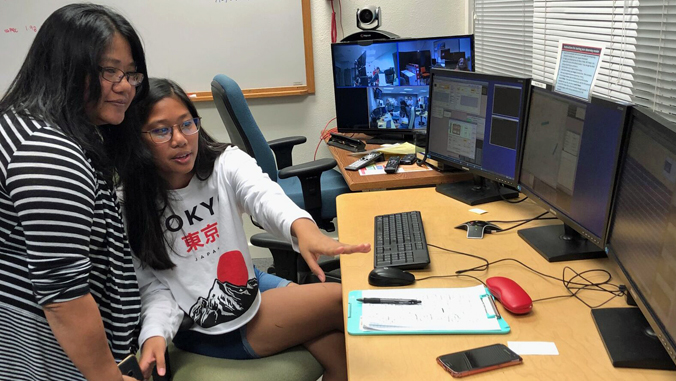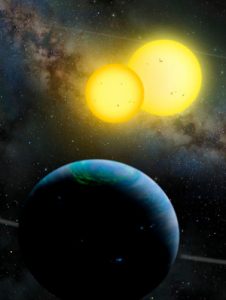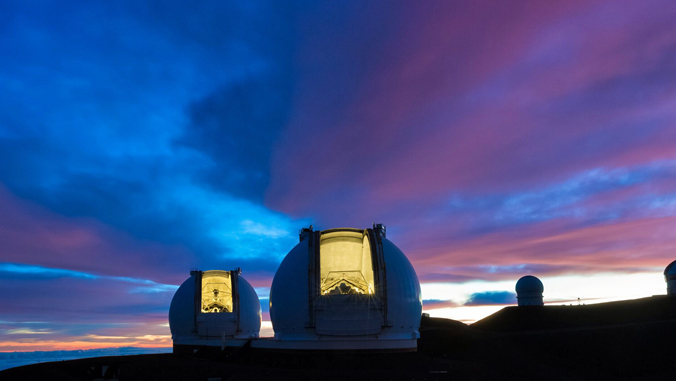
The Star Wars universe turned from science fiction to science fact for a Waipahu High School student, who observed a real-life “Tatooine” using one of the largest, most scientifically-impactful observatories in the world.
High school senior Laura Daclison performed professional, astronomical observations of Kepler-35 using the W.M. Keck Observatory. Like Luke Skywalker’s home planet, which has two suns, Kepler-35 has a planet that orbits a pair of star—a circumbinary system.

Daclison is part of the Maunakea Scholars program, a collaboration between the Department of Education, the University of Hawaiʻi and Maunakea Observatories. Hawaiʻi public high school students apply for observing time on world-class Maunakea telescopes, and the selected students are then paired with a mentor and telescope staff who assist them with their research.
Helping Daclison during her observing night were Keck Observatory Support Astronomer Josh Walawender, Canada-France-Hawaiʻi-Telescope Outreach Program Manager Mary Beth Laychak and UH Institute for Astronomy (IfA) graduate students Christian Flores and Anna Payne and postdoc Lauren Weiss.
Daclison’s goal is to find out what would happen if Earth had two suns. “I chose Kepler-35 because the two stars are really similar to our sun,” she said. “I thought, if Earth had two suns just like Kepler-35, maybe there would be some correlation between them.”
“Maunakea Scholars is a fabulous opportunity for students to really do science, and it’s possible because of the University of Hawaiʻi,” said Laychak. “We have contributions from all of the observatories—every telescope on the mountain gives observing time to these students. It gives them a really unique opportunity to not just learn about science, but actually do science.”
For more on Daclison and her time at the Keck Observatory, read the full story on the Keck Observatory website.


